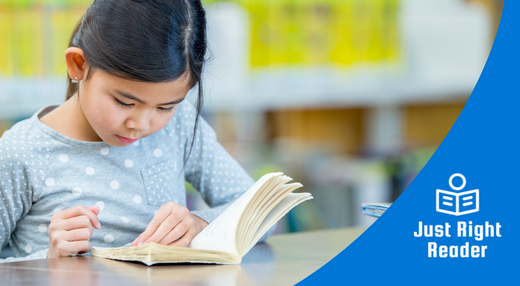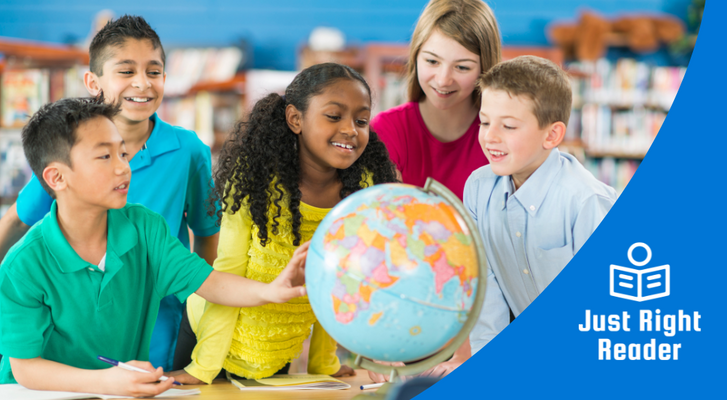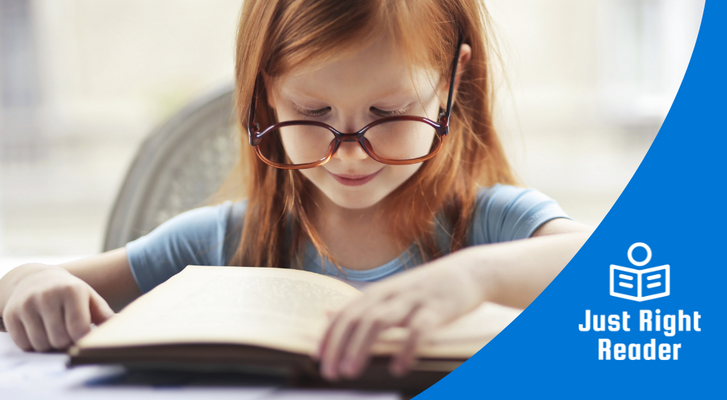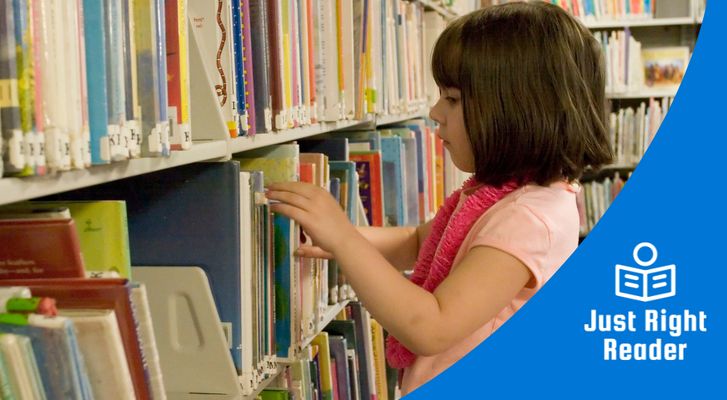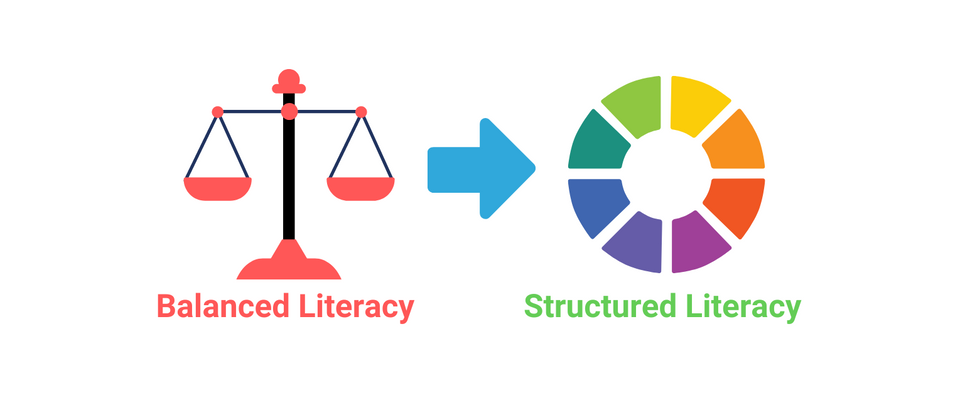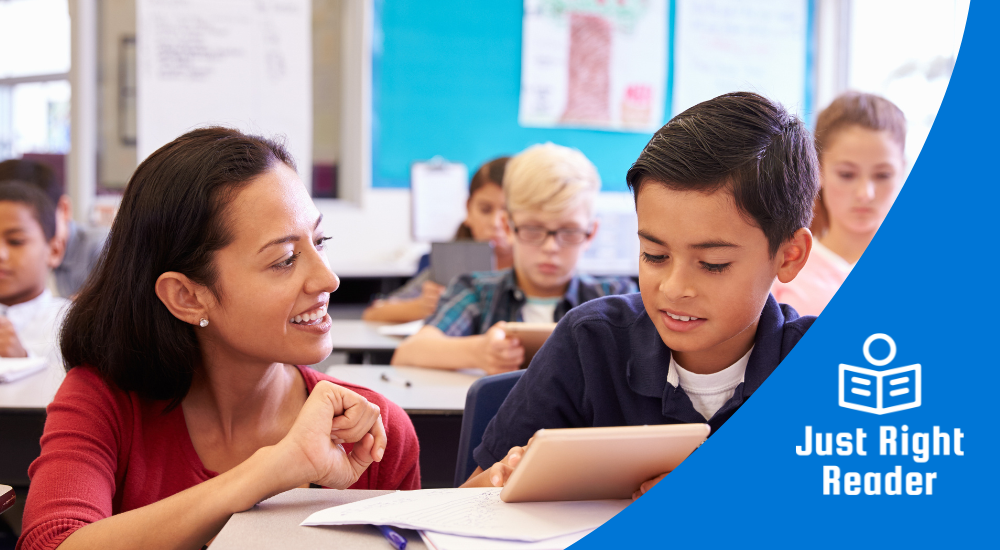
“Teaching aligned with the Science of Reading requires high-quality materials, not specific programs.”
Dr. Laura Tortorelli, Associate Professor at Michigan State University
Navigating through reading curriculums and materials can be daunting, making it challenging to decide which ones to implement and which ones to set aside. How can we ensure we have the necessary evidence-based resources to teach our students effectively?
In a recent Just Right Reader Science of Reading Symposium, Dr. Laura Tortorelli explained how to bring high-quality instruction into classrooms by examining curriculum and resources through a structured literacy lens.
What is structured literacy?
The International Dyslexia Association first used the term structured literacy to refer to programs that teach reading using instruction grounded in the Science of Reading research.
Effective structured literacy instruction and interventions involve explicit and systematic teaching of foundational skills like decoding and spelling and other crucial literacy components such as vocabulary, comprehension, and writing (International Dyslexia Association, 2019).
Dr. Tortorelli dives deeper into structured literacy in this brief research snippet. [0:54]
Why are high-quality instructional materials important for student achievement?
A growing body of research suggests that curriculum significantly impacts student learning.
Several studies have found numerous advantages of switching from a low-quality curriculum to a high-quality curriculum.
-
more opportunities for rigorous instruction, deeper student engagement, and additional learning
- larger, more cost-effective impact on student achievement than other interventions (Steiner, D., Magee, J., & Jensen, B., 2018)
- stronger partnerships with families supporting learning at home (Chu, E., Clay, A., & McCarty, G., 2021)
Access to high-quality instructional materials offers teachers an important advantage: time.
Teachers often spend numerous hours searching for or creating materials themselves. Studies indicate that teachers dedicate between 7 and 12 hours per week to this task, resulting in inconsistent instructional quality (Goldberg, M., 2016). High-quality materials enable teachers to allocate their time to other productive tasks, such as lesson planning, individualized student support, professional development, etc.
What teaching practices and materials are used in effective structured literacy instruction?
Given that high-quality instructional materials are essential and daily instructional time is limited, evaluating curriculums, programs, and instructional materials is critical to equip educators with the necessary tools to teach reading effectively.
Whether you are a district leader exploring a new curriculum or an educator deciding which materials to use, refer to Dr. Tortorelli's guidelines below when making instructional strategies and resource decisions.
Phonological Awareness and Alphabet Instruction
Effective phonological awareness and alphabet instruction is intensive, fast-paced, and supportsorthographic mapping.
Let’s review:
- Phonological awareness is the ability to recognize and manipulate spoken parts of words.
- Phonemic awareness is the ability to recognize and manipulate individual sounds (phonemes) in spoken words.
Look for curriculums and materials that:
|
Prioritize
|
Avoid
|
Learn more about phonological awareness and alphabet instruction. [01:51]
Phonics & Spelling Instruction
Similar to phonological awareness and alphabet instruction, phonics and spelling instruction supports orthographic mapping and theopportunity to connect words to their meaning.
Let’s review:
- Phonics involves teaching students to understand how sounds (phonemes) connect to written letters (graphemes) to form letter-sound relationships (alphabetics) and spelling (orthographic) patterns.
Look for curriculums and materials that:
|
Prioritize
|
Avoid
|
Learn more about phonics and spelling instruction. [02:30]
Multisyllabic Decoding Instruction
It is important to introduce students to multisyllabic decoding instruction, including prefixes and suffixes, starting as early as first grade.
Let's review:
- Multisyllabic words: words that have more than one syllable, or vowel sound.
- Morphology: the study of words and their parts
- Morpheme: smallest units of meaning, like prefixes and suffixes
Look for curriculums and materials that:
|
Prioritize
|
Avoid
|
Learn more about multisyllabic decoding instruction. [01:38]
High-Quality Texts to Support Literacy Instruction
Authentic high-quality texts that align with instruction significantly impact reading achievement. In other words,the texts students practice with make a difference.
Look for curriculums and materials that:
|
Prioritize
|
Avoid
|
What makes Just Right Reader Science of Reading decodables and literacy resources special?
With engagingClassroom Libraries andTake-Everywhere Literacy Packs, students have many opportunities to practice their decoding skills in an authentic reading experience, which allows them to become stronger readers. Plus, teachers have access to ready-to-use resources that make implementation easy!
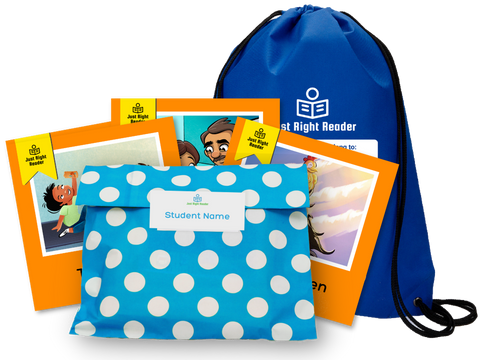
Our decodables feature:
- An extensive library of 1,000+ titles that are 90% decodable, with 20% of each page targeting the focus skill
- Engaging and relatable stories with relatable characters and vibrant illustrations that motivate students to keep reading
- Evidence-based, rigorous phonics scope and sequence that aligns to all phonics programs and curriculums
-
QR codes that link tomemorable video lessons in 14+ languages
- Engaging activities that make phonics fun
What tools are available for assessing reading programs and materials?
Dr. Torotelli recommends utilizing reputable rubrics to evaluate reading curriculum and materials to ensure they contain high-quality resources for effective structured literacy instruction.
- EdReports's Six Steps to Adopting High-Quality Materials
- EdReports
- The Reading League
- Institute of Education Sciences
Click here to watch the full symposium replay with Dr. Laura Tortorelli.
References
Chu, E., Clay, A., & McCarty, G. (2021). (rep.). Pandemic Learning Reveals the Value of High-Quality Instructional Materials to Educator-Family-Student Partnerships. Retrieved from https://cprl.law.columbia.edu/sites/default/files/content/Publications/CPRL_2021_Fundamental%204_Final.pdf.
Goldberg, M. (2016). Classroom Trends: Teachers as Buyers of Instructional Materials and Users of Technology. K-12 Market Advisors. Retrieved from:https://mdreducation.com/reports/classroom-trends-teachersbuyers-instructional-materials-users-technology/
International Dyslexia Association. (2019).Structured Literacy: An introductory guide.
Steiner, D., Magee, J., & Jensen, B. (2018). (rep.). What we teach matters. How quality curriculum improves student outcomes. Retrieved from https://drive.google.com/file/d/1S67iToy0kHfOaya3QMvJaxyvRofb9Btd/view.
Dr. Tortorelli, Laura. Associate Professor at Michigan State University.
Symposium onThe Science of Teaching Reading: How Structured Literacy Can Empower All Students, March 8, 2024.
Young, Alanna Bjorklund. “High-Quality Curricula: A Cost-Effective Way to Increase Student Learning.” November 2018.https://edpolicy.education.jhu.edu/high-quality-curricula-a-cost-effective-way-to-increase-student-learning




